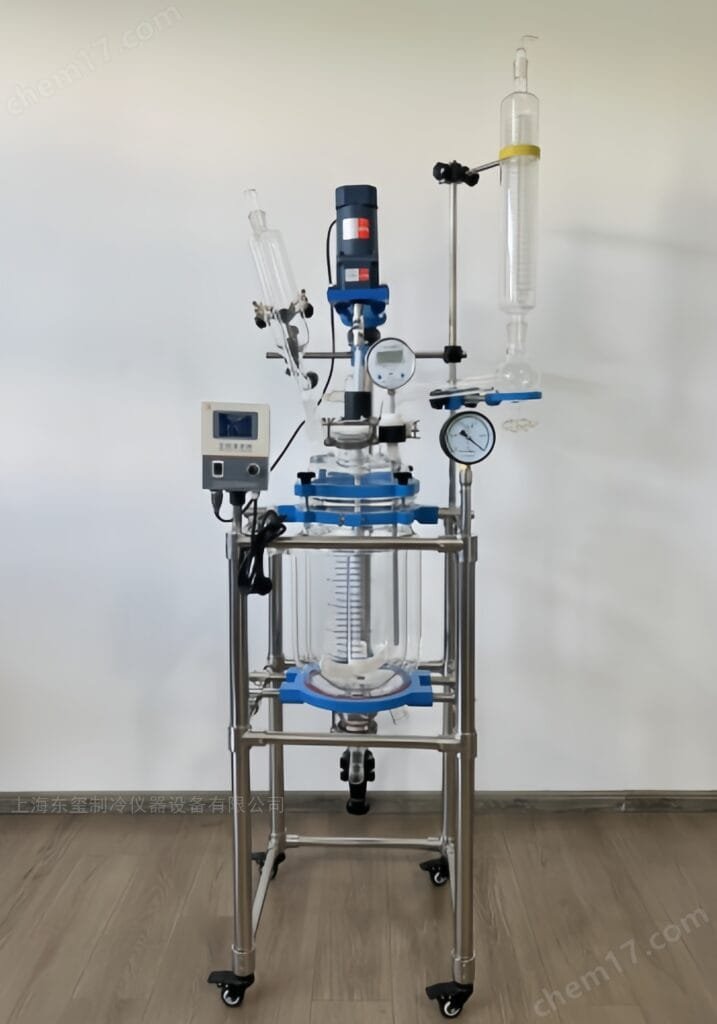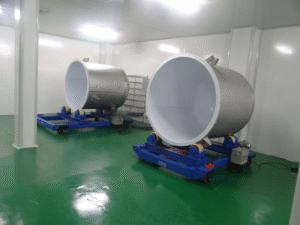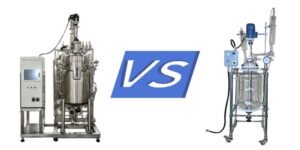The Role of Glass Reaction Vessels in Chemical Research
In scientific research, precision and control are paramount, especially when dealing with complex chemical reactions. One essential tool that helps maintain accuracy in such processes is the Glass Reaction Vessel. These vessels are used extensively in laboratories for reactions that require high temperatures, pressure control, and excellent chemical resistance. From pharmaceuticals to industrial manufacturing, Glass Reaction Vessels are indispensable in many fields of research and production.
EquilRxnLab offers top-tier solutions in the form of their Glass Reaction Vessel models, such as the 200L Glass Chemical Reactor, which is designed to provide precise control for various chemical processes. This article delves into the importance of Glass Reaction Vessels, their features, and how they contribute to improved results in scientific experiments.

What is a Glass Reaction Vessel?
A Glass Reaction Vessel is a specially designed container used in laboratory settings to facilitate chemical reactions under controlled conditions. Typically made from high-quality borosilicate glass, these vessels provide a transparent view of the reaction process while maintaining the necessary chemical resistance to withstand harsh reagents and high temperatures.
Glass Reaction Vessels are equipped with various features such as heating jackets, stirring mechanisms, and pressure control systems, all designed to help researchers manage the reaction environment. These vessels are ideal for a wide range of applications, including chemical synthesis, distillation, extraction, and more.
Key Features of a Glass Reaction Vessel
- Temperature and Pressure Control
One of the most essential features of a Glass Reaction Vessel is its ability to maintain precise temperature and pressure conditions. The glass construction, especially when paired with a heating jacket or cooling system, allows for consistent control over the reaction environment. This ensures that reactions occur within the required thermal range, which is crucial for accurate and repeatable results. - Chemical Resistance
Glass Reaction Vessels are designed to withstand exposure to a wide variety of chemicals. Borosilicate glass, commonly used in these vessels, offers excellent chemical resistance and thermal shock protection, making it an ideal choice for reactive substances like acids, bases, and solvents. - Transparency for Monitoring
One significant advantage of using a Glass Reaction Vessel is the ability to visually monitor the progress of a chemical reaction. The transparent nature of the glass allows researchers to observe the color changes, bubbling, or any other visible reactions without having to open the vessel, thus minimizing the risk of contamination or exposure to hazardous substances. - Ease of Cleaning
Glass is non-porous and easy to clean, making it ideal for experiments that involve multiple chemical reactions. After each use, a Glass Reaction Vessel can be thoroughly cleaned to remove any residues, ensuring that no cross-contamination occurs between experiments.
Applications of Glass Reaction Vessels
Glass Reaction Vessels are used in a variety of scientific applications, including:
- Chemical Synthesis: Researchers use these vessels to create new compounds by combining different chemicals under controlled conditions.
- Pharmaceutical Production: In the pharmaceutical industry, Glass Reaction Vessels are used to synthesize active ingredients and other compounds needed for drug development.
- Environmental Studies: Glass vessels are also employed in environmental chemistry to study the effects of chemical processes on the environment.
- Food and Beverage Industry: They are used for extraction processes to obtain specific components from raw materials.
Setting Up a Glass Reaction Vessel
Proper setup of a Glass Reaction Vessel is essential to ensure the success of any experiment. Below are key steps for setting up and operating a Glass Reaction Vessel:
- Prepare the Reactor and Components
Start by inspecting all components of the Glass Reaction Vessel, including the glass container, jacket, stirrer, and fittings. Ensure that everything is clean and free of cracks or damage. For instance, the 200L Glass Chemical Reactor from EquilRxnLab is designed for large-scale applications and requires careful handling of all parts. - Attach the Stirring Mechanism
The stirring mechanism ensures uniform mixing of the reactants. Attach the stirrer to the reactor and check that it operates smoothly. The stirring speed should be adjusted based on the reaction requirements to avoid any unwanted effects. - Connect the Heating and Cooling Systems
The jacket surrounding the glass vessel requires either a heating or cooling fluid to maintain the optimal temperature range. Connect the jacket to the heating or cooling system and ensure that the fluid flows correctly through the jacket without any leaks. - Sealing and Pressure Monitoring
If the experiment requires pressurization, make sure all seals are in place and functioning correctly. Pressure monitoring devices should be calibrated to ensure that the system can safely maintain the required conditions. - Start the Reaction
Once everything is set up, begin the reaction. Continuously monitor the process, checking the temperature, pressure, and stirring speed. It is essential to keep the reaction environment stable throughout the experiment for accurate results.
Maintenance of Glass Reaction Vessels
Maintaining a Glass Reaction Vessel is crucial for its longevity and optimal performance. Here are some tips for maintenance:
- Regular Cleaning: After each experiment, clean the vessel thoroughly with mild detergents and ensure no chemical residues are left behind.
- Inspect for Cracks: Periodically inspect the vessel for any signs of cracks or damage, particularly around the seals and joints.
- Check Seals and Gaskets: Regularly check all seals and gaskets to ensure they are in good condition to prevent leaks.
Why Choose EquilRxnLab’s Glass Reaction Vessels?
EquilRxnLab provides some of the best Glass Reaction Vessels on the market, including models designed for both small-scale and large-scale applications. For example, their 200L Glass Chemical Reactor offers top-tier features, such as advanced temperature control, robust construction, and scalable design. The products from EquilRxnLab are known for their precision, reliability, and efficiency.
For more information or to purchase a Glass Reaction Vessel, visit EquilRxnLab’s product page.
Explore More from EquilRxnLab
To stay updated with the latest innovations and product releases, follow EquilRxnLab on YouTube, Instagram, and Facebook.
Browse the full catalog of laboratory equipment at EquilRxnLab’s product catalog.




